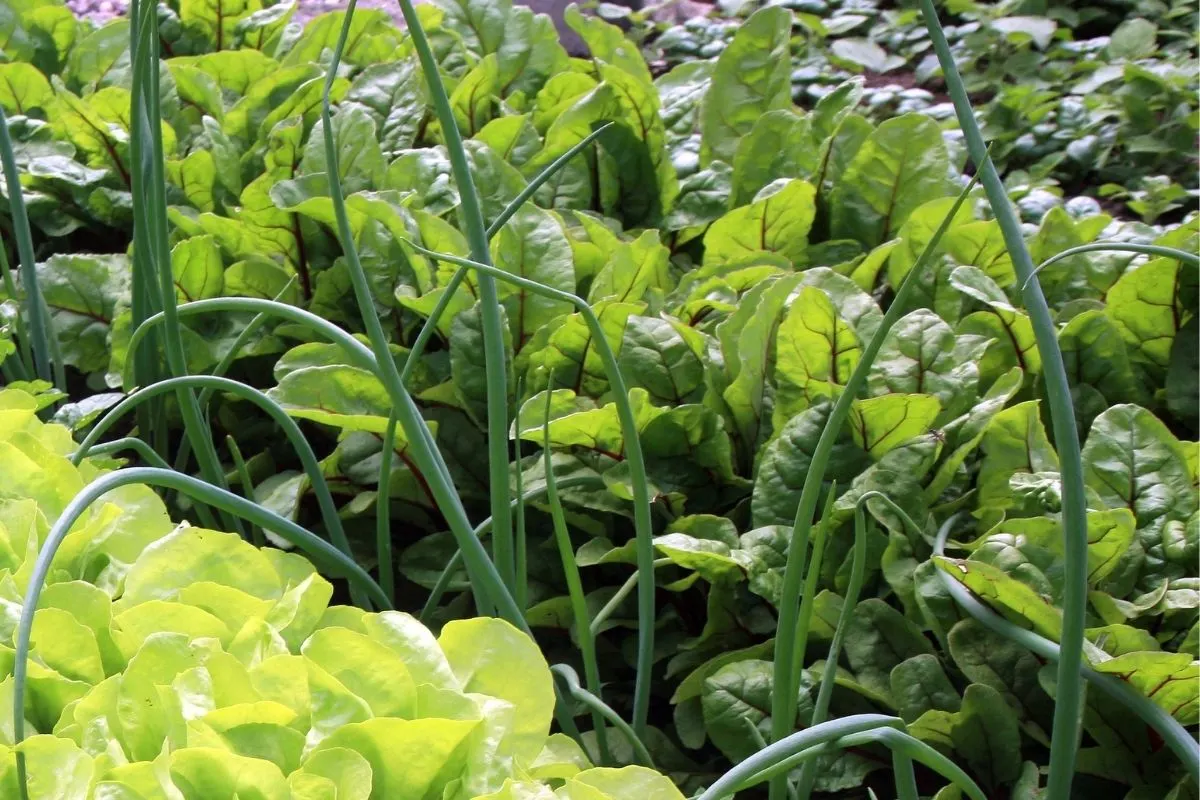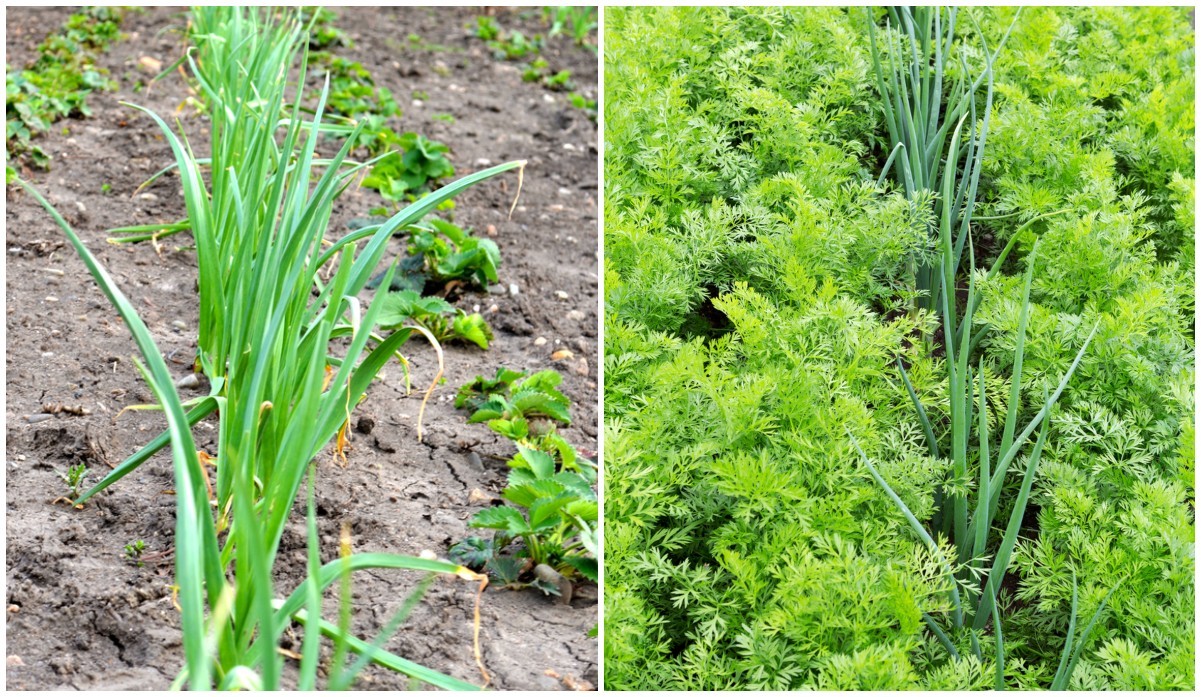Green Onion Companion Plants That Will Help Your Garden Thrive
Green Onion Companion Plants That Will Help Your Garden Thrive
Green onions are a versatile vegetable that can be used in a variety of dishes. They are also relatively easy to grow, making them a great choice for beginner gardeners. But did you know that planting green onions with certain companion plants can help them thrive?
In this blog post, we will discuss some of the best green onion companion plants. We will also talk about why companion planting is beneficial and how to choose the right companion plants for your garden.
What is Companion Planting?
Companion planting is a gardening practice that involves planting certain types of plants together. The idea is that certain plants can benefit each other in a variety of ways. For example, some plants can attract beneficial insects that help to control pests, while others can help to improve the soil quality or deter diseases.
There is a lot of scientific research to support the benefits of companion planting. For example, one study found that tomatoes grown near basil had a significantly lower incidence of aphids than tomatoes grown without basil. Another study found that cucumbers grown near marigolds had a significantly higher yield than cucumbers grown without marigolds.
Why Plant Green Onions with Companion Plants?
Green onions can benefit from being planted with a variety of companion plants. Some of the best green onion companion plants include:
- Beets: Beets can help to deter pests that damage green onions, such as aphids and flea beetles.
- Broccoli: Broccoli can help to improve the flavor of green onions.
- Carrots: Carrots and green onions can help to improve each other's growth.
- Cucumbers: Cucumbers can help to deter pests that damage green onions, such as spider mites and whiteflies.
- Lettuce: Lettuce can help to suppress weeds that compete with green onions for water and nutrients.
- Marigolds: Marigolds can help to attract beneficial insects that help to control pests, such as ladybugs and lacewings.
- Peas: Peas can help to improve the nitrogen levels in the soil, which can benefit green onions.
- Potatoes: Potatoes can help to deter pests that damage green onions, such as root maggots.
- Spinach: Spinach can help to suppress weeds that compete with green onions for water and nutrients.
How to Choose Companion Plants for Green Onions
When choosing companion plants for green onions, it is important to consider the following factors:
- Pests: Some plants can attract beneficial insects that help to control pests that damage green onions. For example, marigolds attract ladybugs and lacewings, which are both predators of aphids.
- Diseases: Some plants can help to suppress diseases that affect green onions. For example, chamomile has anti-fungal properties that can help to prevent fungal diseases in green onions.
- Nutrients: Some plants can improve the nutrient levels in the soil, which can benefit green onions. For example, peas fix nitrogen in the soil, which can provide green onions with a source of nitrogen.
- Water: Some plants have similar water requirements to green onions, which can help to ensure that both plants have enough water. For example, cucumbers and green onions both have moderate water requirements.
- Sunlight: Some plants have similar sunlight requirements to green onions, which can help to ensure that both plants get enough sunlight. For example, lettuce and green onions both need full sun.
Conclusion
Planting green onions with companion plants can help them thrive. By considering the factors listed above, you can choose the right companion plants for your garden and help your green onions reach their full potential.
Green onions are a versatile vegetable that can be enjoyed in a variety of dishes. They are also relatively easy to grow, and companion planting can help to improve their growth and yield.
Some of the best companion plants for green onions include:
- Beets: Beets help to repel aphids and other pests that can damage green onions.
- Brassicas: Brassicas, such as broccoli, cabbage, and Brussels sprouts, help to deter pests that target green onions, such as cabbage loopers and cabbage worms.
- Carrots: Carrots help to improve the flavor of green onions.
- Lettuce: Lettuce helps to suppress weeds and improve the drainage around green onions.
- Peppers: Peppers help to repel pests that target green onions, such as thrips and spider mites.
For more information about green onion companion plants, please visit Gardenia Inspiration. This website provides a comprehensive list of companion plants for a variety of vegetables, including green onions. You can also find tips on how to plant and care for green onions, as well as recipes for using them in your cooking.
FAQ of green onion companion plants
- What are some good companion plants for green onions?
Green onions are a versatile crop that can be grown alongside a variety of other plants. Some of their best companion plants include:
* Broccoli: Broccoli and green onions both repel pests, so they can help each other thrive.
* Carrots: Carrots and green onions benefit from each other's growth. The carrots help to keep the soil loose and aerated, which the green onions appreciate.
* Cucumbers: Cucumbers and green onions both attract beneficial insects, which can help to control pests.
* Lettuce: Lettuce and green onions both grow well in cool weather, so they can be planted together in early spring or fall.
* Peas: Peas and green onions both fix nitrogen in the soil, which can help to improve the fertility of the soil for other plants.
- What are some plants that should not be planted near green onions?
There are a few plants that should not be planted near green onions, as they can compete for resources or attract pests. These plants include:
* Beans: Beans and green onions can compete for nitrogen, so it is best to plant them in separate areas of the garden.
* Herbs: Some herbs, such as mint and sage, can be aggressive growers and can crowd out green onions.
* Potatoes: Potatoes and green onions are both susceptible to the same pests, so it is best to avoid planting them near each other.
* Tomatoes: Tomatoes and green onions can both attract nematodes, which are small, parasitic worms that can damage plants.
* Turnips: Turnips and green onions can both attract the same pests, so it is best to avoid planting them near each other.
- How do green onions benefit other plants?
Green onions can benefit other plants in a number of ways. They can:
* Repels pests: The strong smell of green onions can repel a variety of pests, such as aphids, cabbage moths, and carrot flies.
* Attracts beneficial insects: The flowers of green onions attract beneficial insects, such as ladybugs and hoverflies, which can help to control pests.
* Improve soil fertility: Green onions fix nitrogen in the soil, which can help to improve the fertility of the soil for other plants.
* Break up compacted soil: The long roots of green onions can help to break up compacted soil, which can improve drainage and aeration.
* Provide shade: The tall leaves of green onions can provide shade for young plants, which can help them to thrive.
- How do I plant green onions with other plants?
When planting green onions with other plants, it is important to consider the size and growth habits of both plants. For example, if you are planting green onions with tall plants, such as tomatoes or corn, you will need to plant the green onions in front of the taller plants so that they do not get shaded out.
You will also need to consider the spacing requirements of both plants. Green onions do not need a lot of space, so you can plant them relatively close together. However, taller plants will need more space, so you will need to space them accordingly.
Finally, you will need to consider the timing of your planting. Some plants, such as beans and cucumbers, should be planted in the spring, while other plants, such as carrots and beets, can be planted in the fall.
- How do I care for green onions planted with other plants?
Once your green onions and other plants are planted, you will need to care for them as usual. This includes watering them regularly, weeding the area, and fertilizing them as needed.
You will also need to keep an eye out for pests and diseases. If you see any pests or diseases, you will need to treat them immediately to prevent them from spreading to your other plants.
Image of green onion companion plants
- Carrots. Carrots and green onions are both root vegetables that benefit from being planted together. Carrots help to repel pests that target green onions, and green onions help to deter carrot flies.

- Cucumbers. Cucumbers and green onions are both heavy feeders, so they can benefit from being planted together. The green onions help to improve the soil quality for the cucumbers, and the cucumbers provide shade for the green onions.
- Lettuce. Lettuce and green onions are both cool-weather crops that can be planted together. The green onions help to repel pests that target lettuce, and the lettuce provides shade for the green onions.

- Peas. Peas and green onions are both nitrogen-fixing plants, which means they can help to improve the soil quality for each other. The peas provide shade for the green onions, and the green onions help to deter pests that target peas.

- Tomatoes. Tomatoes and green onions can be planted together, but it is important to space them properly. Tomatoes need full sun, while green onions prefer partial shade. If you plant them too close together, the tomatoes will shade out the green onions.
Post a Comment for " Green Onion Companion Plants That Will Help Your Garden Thrive"